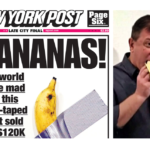Elon Musk, always full of surprises, transformed his profile on platform X to ‘Kekius Maximus,’ complete with a Roman-style Pepe the Frog avatar, once again igniting chaos and speculation. His actions mirror the behavior of an archetypal trickster: a figure who breaks rules, sows confusion, and simultaneously fosters transformation. The chain of events began with Musk’s open defense of the H1B visa program. This program, which brings highly skilled foreign workers to the U.S., was described by Musk as essential for innovation. However, his stance drew criticism from the MAGA movement, with some fearing these visas threaten American jobs. Next came a wave of uproar over speculation about an anonymous account, ‘Adrian Dittmann,’ which might be Musk’s alter ego. The account appeared to defend him against critics, raising questions about Musk’s use of pseudonyms to shape his own narrative. Amid the controversy, Musk changed his profile name on X to ‘Kekius Maximus’ and playfully announced his aim to “reach level 80 in hardcore PoE.” His reference to the popular game Path of Exile 2 resonated with the online gaming community but quickly took on an economic dimension. Shortly after the name change, the value of the memecoin Kekius Maximus (KEKIUS) […]
Continue readingChill Guy, Uptight Creator
The “Chill Guy” meme has completely taken over the internet. This illustration of an anthropomorphic dog in relaxed human attire, introduced by artist Phillip Banks, exudes an attitude perfectly captured in a single sentence: “He’s just a chill guy who doesn’t gaf.” And yet, ironically, it’s Banks himself who now seems to care deeply about what is happening to his creation. His legal battle to reclaim control over the “Chill Guy” feels like a fight against the natural forces of the internet. Banks, an artist from North Carolina, posted the illustration on his social media in October 2023. The drawing was quickly transformed into a symbol of carefreeness and became the inspiration for viral memes. The internet turned his creation into a universal joke, a memecoin, and even a marketing icon. Some of these projects reached a market capitalization of hundreds of millions of dollars. But while the world embraced the “Chill Guy,” Banks saw his work appear unauthorized on merchandise, in crypto projects, and as marketing material. That changed everything. Banks decided to take up the legal challenge to defend his copyright. This is not the first time an artist has been entangled in the complexities of internet memes […]
Continue readingThe $6.2 Million Banana
In 2019, Maurizio Cattelan’s The Comedian debuted at Art Basel Miami: a banana duct-taped to a wall. It sounds like a practical joke—and maybe it is—but one that sold for $120,000. Five years later, a copy of the work fetched a staggering $6.2 million at a Sotheby’s auction. The seemingly banal piece can be easily explained as a textbook example of Kekonomics: a world where attention is the true currency, and a banana can be worth as much as a Picasso. Not everyone quietly embraced the irony of this artwork. Performance artist David Datuna stepped forward one day, peeled the banana off the wall, and ate it, declaring himself the “Hungry Artist.” His action was caught on camera and immediately went viral. Datuna later claimed he had not “destroyed art,” but rather “created art.” And he had a point: his performance added a new layer to the narrative of The Comedian. The banana itself disappeared, but the idea—and the uproar—persisted. After all, what is conceptual art if not an invitation to play in the infinite space between idea and execution? The “Hungry Artist” incident demonstrated that The Comedian is not just an artwork; it’s a platform for interaction. Datuna’s action […]
Continue readingThe 7 Laws of Kekonomics
Where memes shape markets and contradictions fuel the system. Each law reveals how Kekonomics turns the irrational into economic power.
Continue reading






